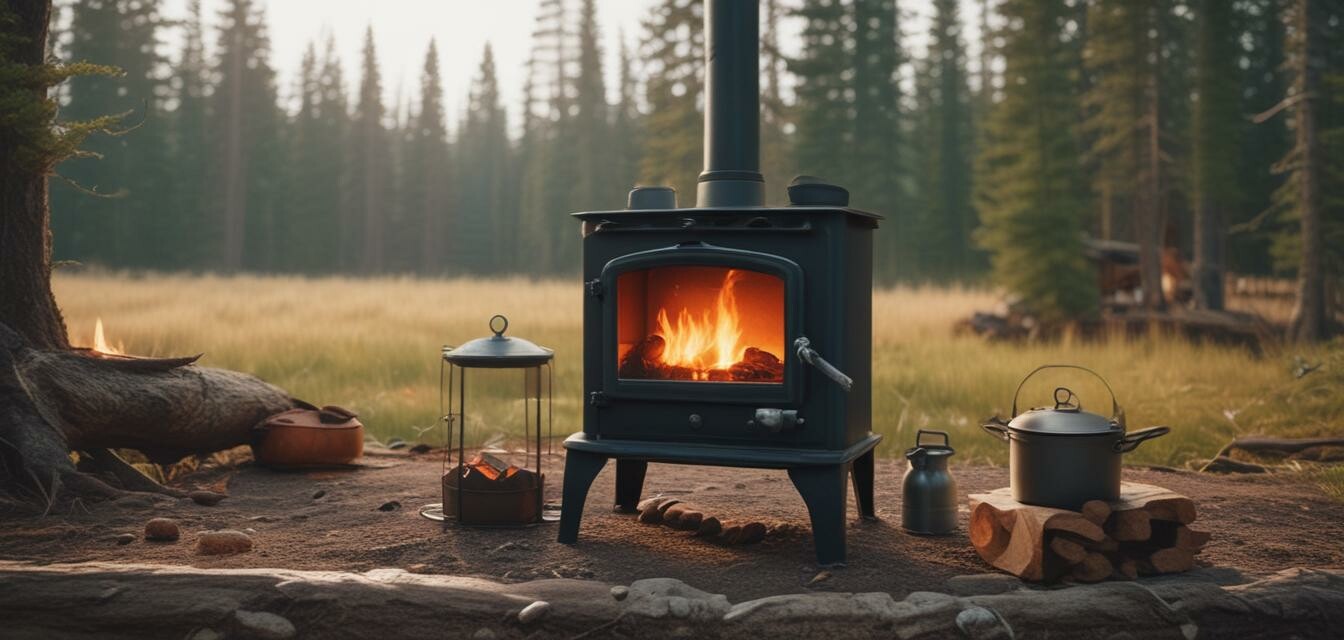
As an Amazon Associate, I earn from any qualifying purchases, at No Extra Cost to You.
The Rise of Outdoor Cooking with Wood Stoves
Key Takeaways
- Wood stoves offer a sustainable cooking solution for outdoor enthusiasts.
- These stoves enhance the backpacking experience by providing a warm meal in nature.
- They promote a deeper connection with nature and camping rituals.
As backpacking continues to evolve, one significant trend is catching the attention of outdoor enthusiasts: outdoor cooking with wood stoves. This approach not only aligns with sustainable living practices but also enhances the experience of enjoying meals in the great outdoors. In this article, we will explore the benefits of using wood stoves for cooking while backpacking, how to incorporate them into your adventures, and why they're becoming a preferred choice for many.
What is a Wood Stove?
A wood stove is a compact cooking device that uses wood as its primary fuel source. They are designed to be lightweight and portable, making them ideal for backpacking trips. Instead of relying on propane or other fuels, wood stoves use the natural resources available in the environment, offering a sustainable cooking alternative.
Benefits of Using Wood Stoves for Outdoor Cooking
- Sustainability: Using wood as fuel reduces reliance on fossil fuels and encourages the use of renewable resources.
- Cost-effective: Wood is often readily available in nature, eliminating the need for expensive gas canisters.
- Culinary experience: Cooking over an open flame adds a unique flavor to your meals.
- Weight efficiency: Modern wood stoves are designed to be ultra-lightweight, making them easy to pack.
- Durability: Wood stoves are typically made from resilient materials, capable of withstanding harsh outdoor conditions.
How Wood Stoves Fit into a Sustainable Lifestyle
Adopting a lifestyle that values sustainability goes beyond just the choice of cooking equipment. Here are a few key considerations that highlight how wood stoves align with environmentally-friendly practices:
| Aspect | Wood Stoves | Traditional Fuels |
|---|---|---|
| Fuel Type | Renewable (wood) | Non-renewable (propane, gas) |
| Waste Production | Minimal | Significant |
| Impact on Nature | Utilizes natural resources responsibly | May contribute to pollution |
| Cost | Lower long-term costs | Higher due to fuel purchases |
Tips for Cooking with Wood Stoves
Beginners Section
- Choose the right wood: Different types of wood burn differently. Hardwoods like oak or maple are generally preferred for cooking.
- Master kindling: Start with small sticks and dry leaves to build a strong flame before adding larger logs.
- Pack smart: Bring lightweight cooking gear that complements your wood stove setup.
- Practice safety: Always cook in designated areas and ensure proper ventilation while cooking.
- Respect the environment: Make sure to adhere to Leave No Trace principles when collecting firewood.
Innovative Wood Stove Designs
As outdoor cooking gains popularity, manufacturers have focused on creating innovative designs tailored for backpackers. Features to look out for include:
- Compact folding designs for easy transportation
- Integrated cooking surfaces for versatile meal prep
- Efficient air-draft systems to improve fuel efficiency
- Built-in safety features to prevent accidental fires
Establishing a Connection with Nature
Using a wood stove for cooking can create a more immersive experience with the environment. Many backpackers report a greater sense of satisfaction knowing that they are harnessing natural resources to enjoy their meals. Cooking outdoors fosters community-building, family bonding, and sharing stories around the campfire.
Conclusion
The rise of outdoor cooking with wood stoves represents a significant shift towards sustainability and enjoyment among backpackers. As you plan your next trip, consider this innovative approach to cooking that not only provides warm meals but also enriches your experience in nature. Embracing wood stoves might just be the perfect way to elevate your backpacking adventures.
Pros
- Eco-friendly fuel source
- Enhances the outdoor experience
- Versatile cooking options
- Affordable in the long run
Cons
- May require time to master
- Availability of firewood varies by location
- Can be less convenient than gas stoves
- Requires careful attention for safety
Explore More on Outdoor Cooking
If you found this article helpful, you might be interested in exploring more about outdoor cooking and backpacking. Check out our categories below:
